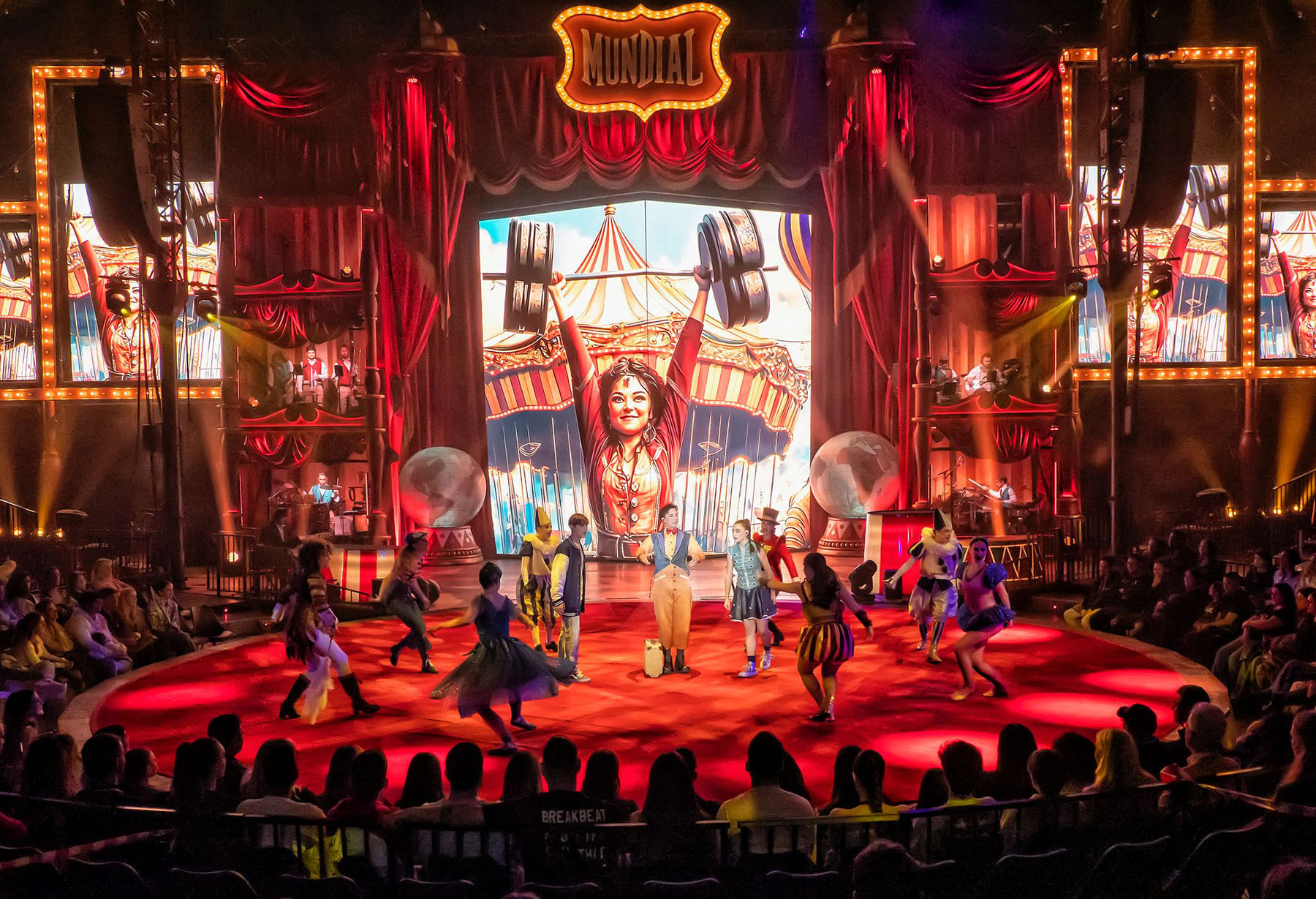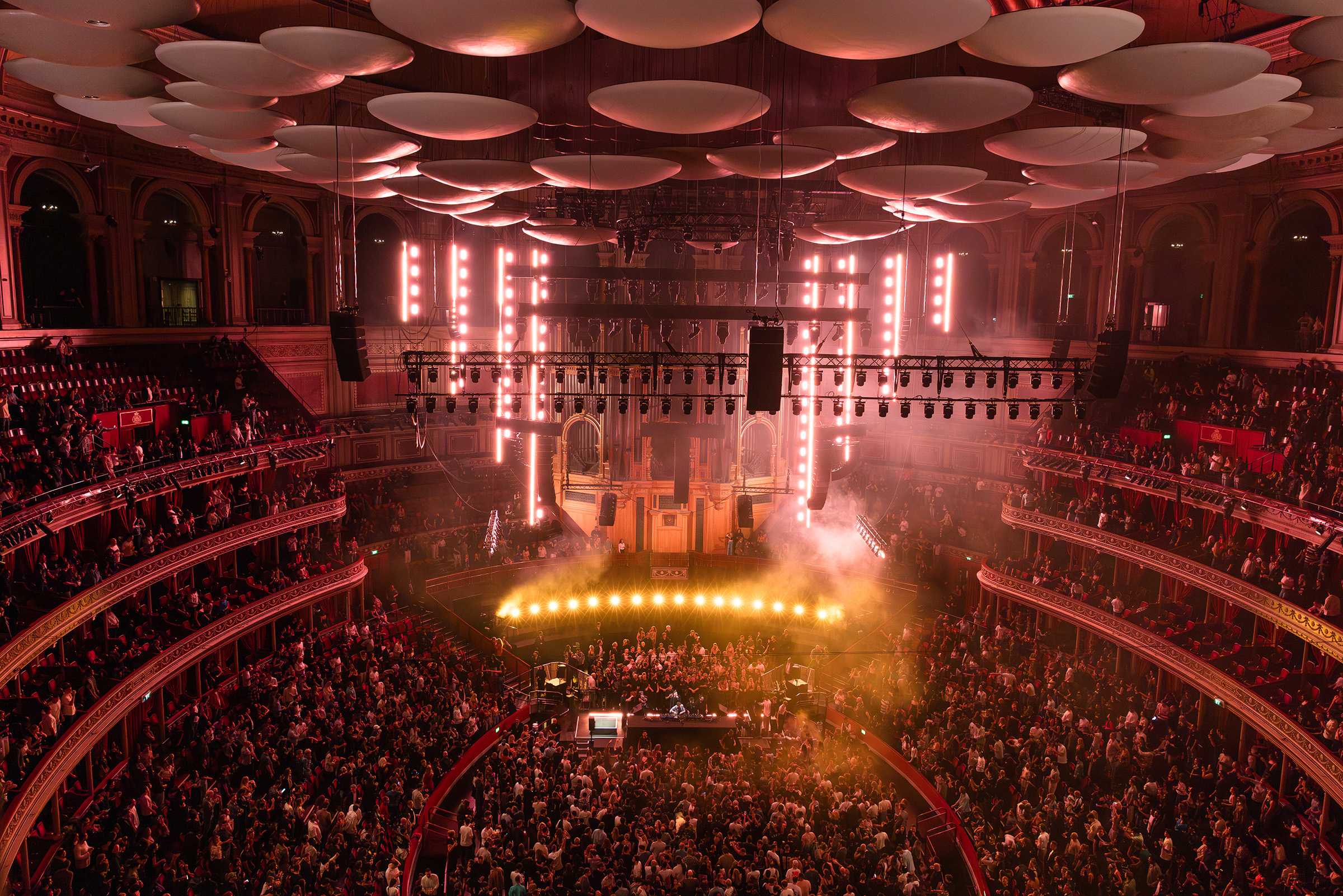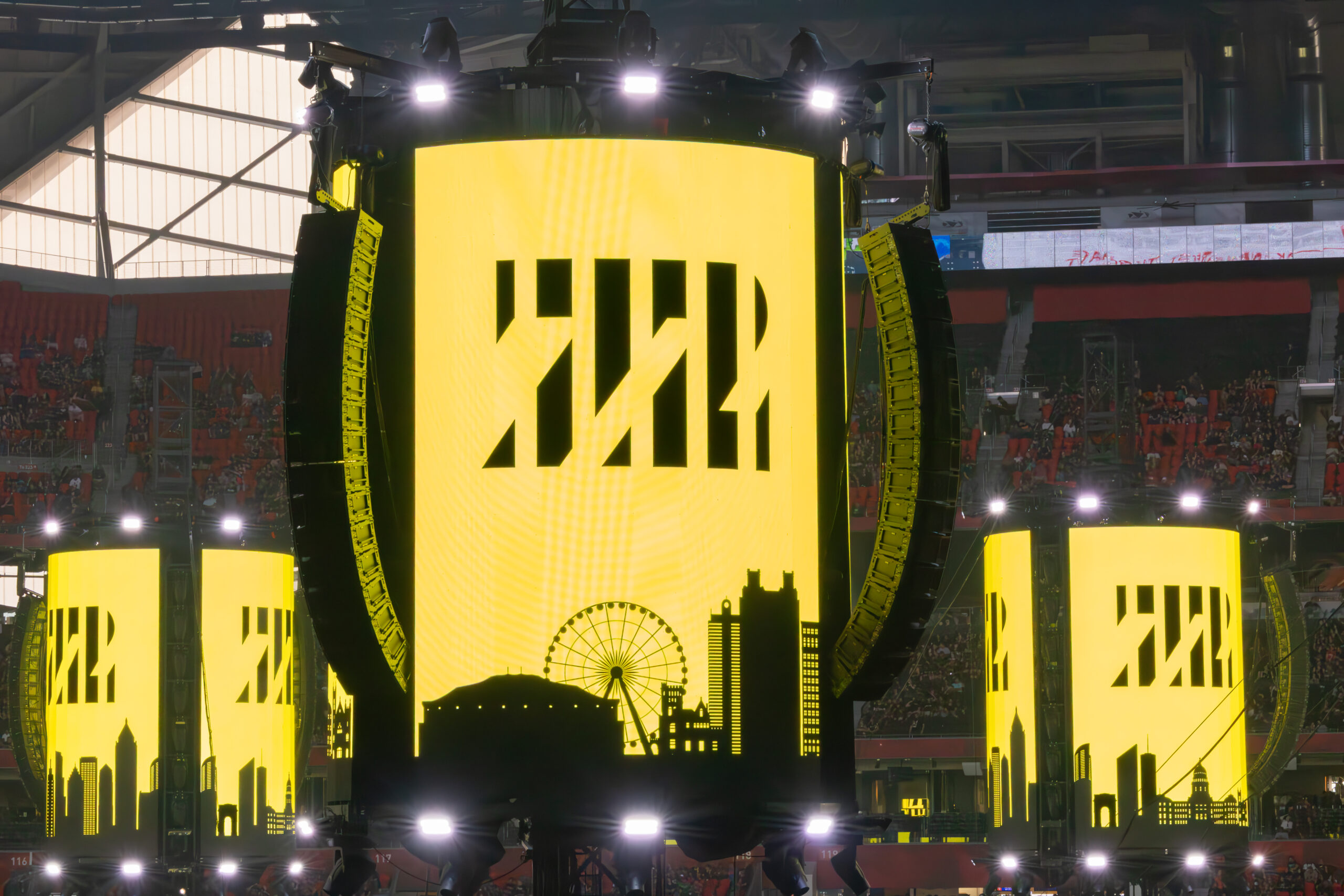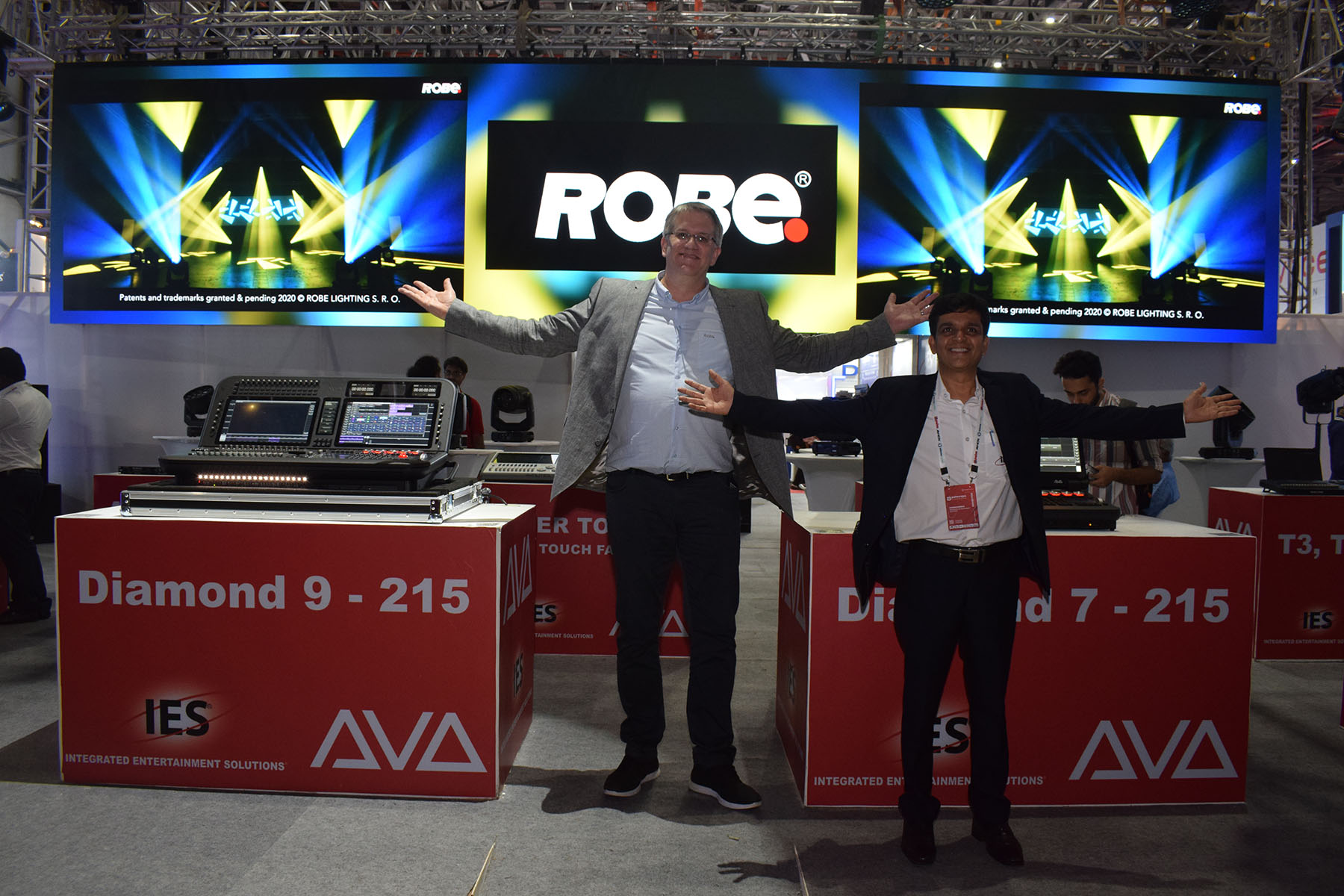NAIROBI, Kenya — The 2009 MTV African Music Awards, staged at the Kasarani Gymnasium at the Moi International Sports Centre, required some 55,000 kgs (more than 60 tons) of gear — and not just from around the block. Gearhouse South Africa, which supplied lighting, LED screens, rigging, power distribution and audio, flew it all in from South Africa.
Claudio Santucci’s stage design included an assortment of cubes clad in diffusion material, lit, and flown at varying heights. They served as giant light-boxes interlaced with Lighthouse and Schnick Schnack LED strips supplied by Procon in Germany.
The floor was black, high-gloss Marley criss-crossed with white lines to add depth and dimension. The set was constructed in Italy and shipped over especially for the event along with the high-gloss flooring.
Bill Lawford led the Gearhouse crew, working with Simon Roche, logistics manager from production company VWV.
Lawford and Roche worked with a production team primarily from the U.K., including lighting designer/director Gurdip Mahal, moving light programmer/operator Ross Williams, FOH sound engineer Derrick Zieba and screens director Chris Saunders from XL Video UK.
U.K.-based HSL also provided additional lighting equipment and crew (technician Tim Oliver) for the event at Gearhouse’s request
The awards program, the second such event sponsored by MTV, was hosted by Wyclef Jean and featured several live performances from Akon, Nigerian rapper M.I., Zebra & Giraffe, Kenyan hip hop star Wahu and others.
Jason Fritz was Gearhouse’s lighting crew chief, and Mahal’s design was rigged onto more than 50 sections of trussing forming mid and back trusses with a 60-foot span over the stage. The rig also included an L-shaped front truss, stretching 60 feet in each direction. This provided lighting positions for the winner’s platform and for washing the front of stage.
Further back in the audience, the crew set up a T-shaped truss made from another 20 sections, which accommodated four under-hung 1.2K followspots, audience lighting and additional fixtures to cover the winner and presenter areas. The fixtures there included a mix of 5K fresnels, Source Four profiles and Robe ColorWash 700E AT moving lights.
Five sections of folding truss were used to form a 40-foot truss section behind the winners pit, loaded with a selection of PARs, 5K fresnels and Source Fours.
Over the stage, the main lighting fixtures were 24 Robe ColorSpot and ColorWash 2500E ATs, plus additional Robe ColorWash 700E ATs on the mid truss, six Atomic 3K strobes with color scrollers and another two under-hung followspots on the upstage truss.
Scattered around the floor and LED screens, there were 22 High End Systems Studio Spots, four Atomics with scrollers and six Studio Color moving lights at the sides for cross-stage washes.
HSL supplied a WholeHog3 desk with backup, programmed and operated by Ross Williams, with Mahal running an Avolites Pearl to control all the generics. HSL also supplied 34 i-Pix Satellites that were ensconced in the set and used to light the cubes, along with 16 i-Pix BB4 wash lights.
Fritz had to train four followspot operators from the local crew who had never done the job before, and reports that their skills and aptitude were amazing. “Among the best follow spotters I have ever worked with,” he said.
Ross Williams added, “It was the first time I have worked with Gearhouse South Africa. The crew were all absolutely brilliant, and Jason and his team went out of their way to be helpful, look after us and ensure that everything went smoothly from the moment we stepped off the plane.”
Gearhouse Rigging provided a crew of six for the load-in and load-out, led by Anthony Banks, who worked alongside MTV’s head rigger, Kevin Monks from U.K.-based Blackout.
They started with the mother grid, measuring 34 meters across and 4.5 meters deep, which supported the flown set elements. They had only a limited number of panels through which the motor chains could be dropped, at 3.8 meters apart.. Eighteen Lodestar motors hoisted the grid.
Six lighting trusses were flown on 21 motors, and audio was flown on two 2-tonne hoists. The audio points had to be bridled in the roof void to distribute the weight across each of the flying nodes, which had an estimated SWL of 1000Kgs each.
The crew also flew a 40-meter black drape at the back of the stage, which was curved around to also form a backstage gathering area. Blackout supplied eight custom-made black drapes to mask the venue’s windows.
A total of 19 tonnes of equipment was suspended from the roof on 70 motors — a combination of half, one and two-tonne Lodestars.
Photo Credit: GioForma
For more information, please visit www.gearhouse.co.za.



